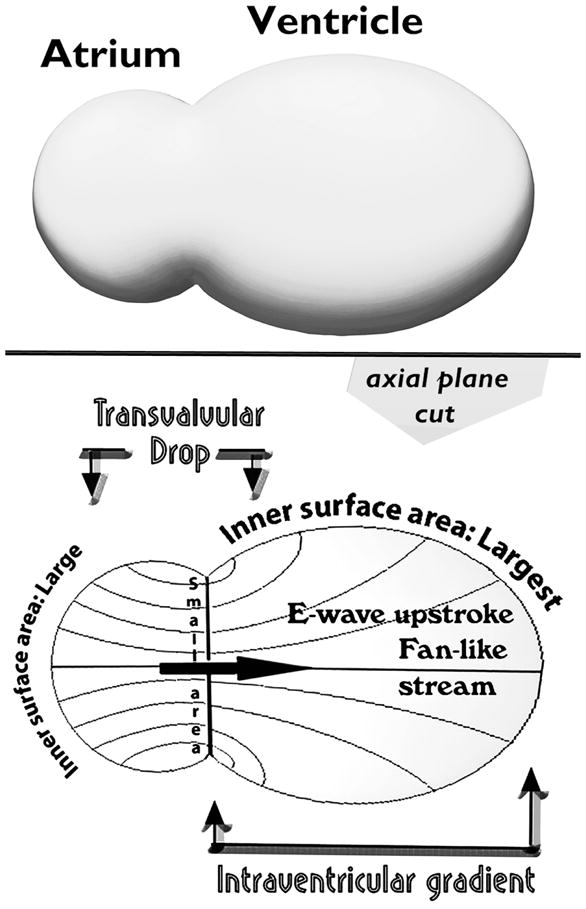Fig. 2.

During the E-wave upstroke, flow is confluent between atrial endocardium and atrioventricular valve orifice and diffluent between the latter and the ventricular chamber walls. There is convective acceleration up to the orifice and convective deceleration beyond it. Transvalvular pressure drops embody convective acceleration, whereas intraventricular gradients convective deceleration, which counterbalances in part the simultaneous local acceleration gradient during the E-wave upstroke. These convective pressure gradients are much greater (depend on r2, where r is an effective radial coordinate) in 3-D space than what might be anticipated on the basis of 2-D projections (dependence on r).
